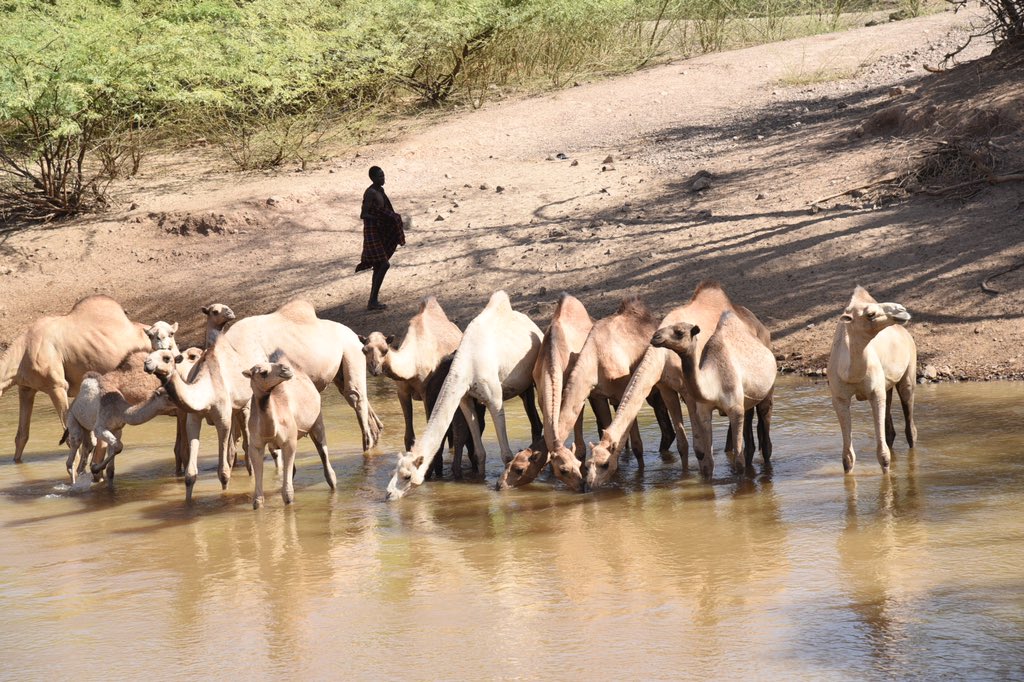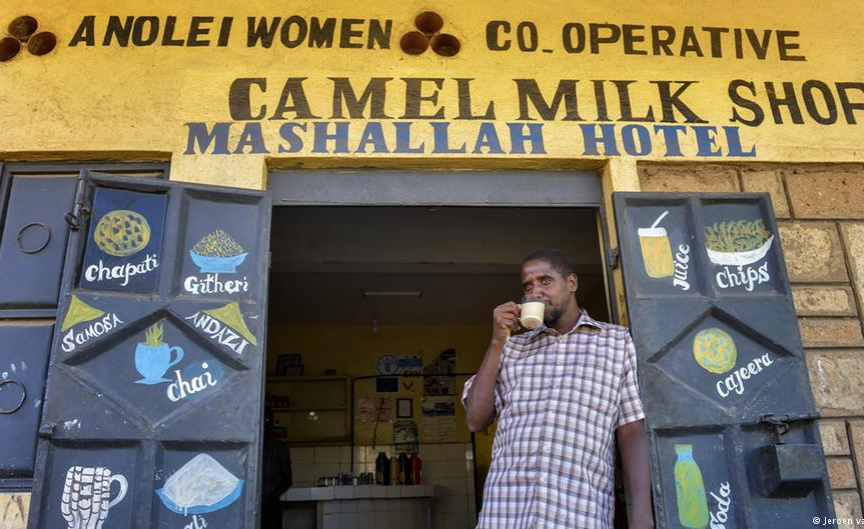
As nutritionists worldwide tout the health benefits of camel milk, its commercial potential is burgeoning – with 80 per cent of the world’s camel population living in Africa.
But obstacles remain to make this elixir transportable and palatable.
Drinking camel’s milk can protect against a range of diseases as well as providing an important source of nutrition for millions of people, according to a recent report.
A team of scientists from Australia, Egypt, Saudi Arabia and United Arab Emirates conducted a review of research into camel’s milk from different sources and published their findings in the Saudi Journal of Biological Sciences in May.
“The fact that camel’s milk has more advantages than disadvantages cannot be overemphasised. All the apparent challenges have plausible solutions.”
Poya Njoka, Ministry of Agriculture, Irrigation and Water Development, Malawi
The study says that camel’s milk is healthier than cow’s milk because it contains less fat, can lower cholesterol levels, is less likely to produce allergic reactions and is richer in some vitamins and minerals.
“Vitamin C is three to five times higher [in camel’s milk] than in cow’s milk, which makes it an important part of diet in arid areas where green foods have limited accessibility,” says the study.
Camel milk also contains certain substances such as bioactive peptides and enzymes not present in cow’s milk, which account for its traditional use for treatment of diseases such as tuberculosis and asthma.
The presence of insulin and insulin-type proteins in camel’s milk may benefit people with diabetes, explains the report. And a protein called lactoferrin can inhibit hepatitis B and C, while the breakdown of another protein, casein, in the human gut produces substances with “a potential positive effect on people with autism”, it adds.
Other substances in camel’s milk may help treat blood, lung, liver and breast cancer by inhibiting the spread of the malignant cells, such as the HepG2 liver cancer cell and the MCF7 breast cancer cell, and stimulating the body’s defence against them, the study says.
Booming market

The findings come as camel’s milk is becoming increasingly popular around the world. The annual Camel Dairy Market report (2021-26), published in February 2021, says that the global market reached a high of $2.3 billion last year and is forecast to grow at eight per cent per year.
Food sourcing company Tridge, which publishes market intelligence on its website, says Kenya is the world’s biggest producer of camel’s milk, followed by Somalia, Mali, Ethiopia and Saudi Arabia, based on figures from 2019.
According to Adel Omar, a Libyan food and nutrition scientist currently based in Spain, increased demand for camel’s milk is being driven by recognition of its health benefits and improvements in production and storage technologies. But challenges remain.
Omar says that camel’s milk proteins are different from those in cow’s milk and degrade rapidly when heated, making it difficult to preserve by pasteurisation or ultra-heat treatment . This makes it difficult to store and transport, with the result that it is more expensive and has a shorter shelf life than cow’s milk.
Some progress has been made to enable partial pasteurisation of camel’s milk by heat-treatment at a lower temperature than for cow’s milk, adds Omar. This type of commercial research and development is continuing and has enabled camel farms in Dubai, United Arab Emirates, to supply European supermarkets with milk over the past few years.
Novel condition
It is still far-fetched for countries in Sub-Saharan Africa to partake in the booming camel market.
Poya Njoka, chief epidemiologist, Ministry of Agriculture, Irrigation and Water Development, Malawi, says that camel’s milk has always been part of the diet for some nomadic people from time immemorial. It is more expensive than cow’s milk.
Njoka adds that camels, just like other mammals, produce milk after giving birth. Their gestation period is long or up to 13 months.
“Now, people are realising that you can build livelihoods from camel’s milk if you have trust in the product.”
Lauren Jones, Action on Poverty
“This means that it takes too long before a camel starts producing milk in subsequent births. A camel produces less milk: six litres per day as compared to a cow which produces 24 litres per day. The population of camels is very much lower than that of cows. All these factors result in low camel’s milk production against an ever-increasing demand,” explains Njoka
“It is very expensive since the animals will be under novel conditions. For now, we can’t think of commercialisation. Even for domestic use, the proportions that would access it would be less than negligible.”
He, however, says that increasing the population of camels through importation or breeding could be an option, but it may raise ethical issues in some quarters.
“Camel’s milk was originally consumed in the eastern countries. It has recently become commercial food in the west and other countries. This implies that camels are being imported to places where they didn’t originally inhabit,” Njoka explains. “This can be handled by consulting the ethical clearing committee for the concerned countries.”
Another concern, Njoka says, is that many believe that camels are not adapted to machine-milking and selective breeding may also be required to boost their milk production and to improve the ease of milking them.
“The fact that camel’s milk has more advantages than disadvantages cannot be overemphasised,” says Njoka. “All the apparent challenges have plausible solutions. This implies that it would be of great service to humanity to grant them access to camel’s milk so that they benefit from its numerous advantages.”
Matter of taste
Omar conducted his own research into heat treatment of camel’s milk while at Reading University in England in 2018-19, analysing changes to the milk that occurred and organising volunteers to taste milk samples treated at various temperatures.
“They thought the heat-treated camel milk had an unpleasant taste, like sour, savoury, aged, and whey flavours,” says Omar. “This is because heat treatments induced formation of volatiles, which were responsible for off-flavours.”
While at Reading, Omar also conducted preliminary experiments to test whether applying pressure to camel’s milk could destroy spoilage bacteria without degrading the proteins to a great extent.
This line of research is being continued by other scientists and shows promise, he adds, but it is mainly in the West and on cow’s milk.
“This research cannot easily be applied to camel’s milk because it has an entirely different composition. We need more research on using pressure to preserve camel’s milk,” he explains.
Supporting farmers
UK-based charity, Action on Poverty, says that camel’s milk can provide up to 50 per cent of nutritional intake for people living in drought-prone areas during times of drought.
As part of its Camili project to boost camel’s milk production among small-scale farms in Kenya’s Garissa and Wajir counties, the charity plans to test solar-powered milk coolers this year to aid the transport of milk to local markets.
Full article on Scidev.net











